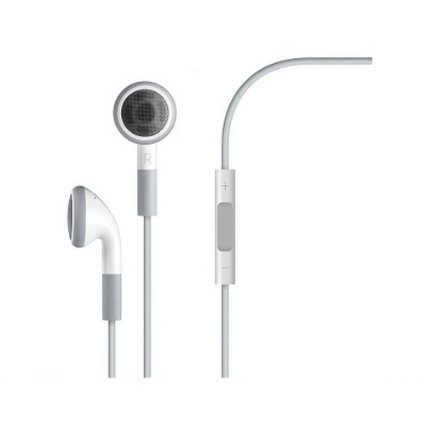Teenage Problems
This Eastside special covers some of the problems that teenagers face.
October 5, 2015

Teens begin to suffer from hearing loss at a young age
If you are listening to music right now, you might want to turn the volume down…or maybe even off. According to nbcnews.com, over 6.5 million teenagers in the United States suffer from hearing loss caused by listening to music at a high volume.
Whether at a concert, listening to music through an iPod or watching TV, exposure to loud noises for any given time period can lead to temporary or permanent hearing loss or constant ringing to the ear, known as tinnitus. These health issues are commonly seen in individuals around 65 years of age, however hearing loss is becoming more prominent in younger audiences nowadays. In fact, according to a survey conducted by the Center of Disease Control and Prevention, 16 percent of teenagers between the ages of 12 to 19 have hearing loss to some degree.
Using earbuds is one of the most popular, convenient ways to listen to music for modern youth; however it is also the most dangerous. Earbuds get jammed into the ear canals and the music vibrations directly hit the eardrum. When these noises hit the eardrum, sensory cells gradually start to die and permanent hearing loss starts to appear. The louder the music is, the more damage is being done to the sensory cells.
If teenagers continuously listen to music at a high volume, especially through earbuds, their hearing will be noticeably worse—or even gone—by the time they are adults.
“For the typical 17 year old, [hearing loss is] not something they notice at all,” said a New Jersey otolaryngologist, Dr. David Lewis, to northjersey.com. “The earlier signs start to affect them as they get older.”
Luckily, there are many preventions that can protect one’s hearing. One of the most efficient ways to prevent hearing loss is limiting the amount of music listened to each day.
“You should only use MP3 devices at levels up to 60 percent of maximum volume for a total of 60 minutes a day,” said Dr. James Foy, a Californian Osteopathic, to the American Osteopathic Association. “The louder the volume, the shorter your duration should be.”
Hearing is one of the most vital senses the human body has, and damaging it at a young age permanently affects individuals for the rest of their lives. The next time you decide to go to listen to your favorite song, remember how important hearing is and turn the volume down a little.

Backpacks and sports cause back pain in teenagers
Even though bone aches are thought of to be common in the elderly, many teenagers suffer from bone pain daily.
Due to the resilient and flexible nature of a child and teenager’s body, many teens can combat bone aches and pains by taking pain reliever medication. However, not everyone is lucky enough to have immediate relief. Whether the pain is caused from a school bag or an athletic sport, almost every teen has suffered from bone pains.
With a school backpack, a student carries the essentials needed for the duration of the school. The essentials include multiple binders and notebook, which can weigh more than one’s back can handle. Due to the heavy backpack’s heavy weight, a strain can be caused on the neck, shoulders and back. The straps of a backpack can pull at one’s shoulders, no matter how padded the shoulder straps are.
A backpack can distort the natural curves of a teenager’s body, which can not only cause bone aches, but also muscle strain to the lower and middle back areas.
Also, a backpack can lead to the rounding of shoulders, which can lead to a weaker muscle and bone in the shoulder region of the body. Due to all of these issues of using a backpack, a person’s back can curve forward, reducing the ease of balance.
Not only does the average student endure bone aches, but also many student athletes can suffer from back pain due to sports injuries.
A minor back injury can occur from a repetitive action. An athlete such as a gymnast, who does certain exercises repetitively, can receive an injury simply from doing a repetitive action. These minor injuries an be prevented by annual doctors visits, where a doctor can test the mobility of some of the common areas of strain.
Although thought of normally in adults, bone pain can affect teenagers by just doing normal daily activities, such as simply going to school.

Technology causes Computer Vision Syndrome in teenagers
For every single second, one blinks about five times. When looking at a screen one blinks about five times less than what is normal to keep one’s eyes moist and healthy.
As people get older, it is expected that their eyes will weaken. Some have been told by their mothers that they should not sit too close to the television screen because it will strain their eyes. But over the years, there has become no doubt that technology has become a part of everyday life for people of all ages. It is not rare to see even a toddler holding a glowing screen close to its face to watch videos or play games. At young ages people are unknowingly damaging their eyes.
Technology has transformed the way humans work. Some believe that the benefits of constant integration of technology far outweigh the damage it is doing. Yet, statistics may prove otherwise. The typical teen logs more than seven hours a day and more than 50 hours a week in front of a TV, computer, or cell phone screen, according to research from the Kaiser Family Foundation. Every one of those minutes in front of a screen is straining the eyes and creating damage for people of young ages. Discomfort, headaches, blurred vision and difficulty focusing are all common symptoms of eyestrain from looking at a screen.
In an article from CNN, ophthalmologist Dr. Brian Boxer Wachler noted that people usually blink around 18 times per minute, which refreshes the eyes naturally.
Wachler said, “Blink rates are reduced when staring at a computer screen or other devices, and this can make your eyes burn, dry out, turn red or feel itchy.”
Computer Vision Syndrome (CVS) describes vision-related problems that result from prolonged use of screens. Symptoms from CVS are so common that studies have shown that between 50 and 90 percent of people who work in front of a computer screen have suffered from some type of eye-trouble.
At one time or another, all students are assigned some form of homework. Thus, for a typical teenager, it is not rare to be spending hours in front of a computer writing an essay, researching for a history project or writing a chemistry lab. Yet, students who use computers throughout the day at school can experience eye problems related to computer use, especially if the lighting and computer position are not ideal.
So what exactly causes eyestrain? The main reasons behind the dilemma are: screen contrast, poor lighting, flicker and glare, according to WebMD’s article on CVS. In order to prevent having the same eye troubles of an elderly person as a teenager, precaution must be taken. There are a few simple ways to relieve symptoms: Remove the glare, adjust your seat, give your eyes a break or fix computer settings.
As CVS is becoming more and more common due to humans’ increased hours of staring at screens, preventative measures are being taken to reduce the symptoms.
Contact lens companies have been attempting to fight against CVS through designing contact lenses to keep eyes moist when looking at a screen. Acuvue suggests that “choosing the right contact lenses” will help keep one’s eyes feeling more comfortable when one is using the computer. Eye therapy also has been reversing the effects of screen use such as struggle to focus vision.
Computer glasses are another option to relieve strain when looking at screens. The lenses in the glasses relax the amount of work eyes require to keep objects in focus at the distance of the computer screen.
Sociologists often blame technology and hours in front of a screen for creating an antisocial generation: teenagers with short attention-spans and bad social skills. Yet, optometrists can remind us that the damage technology is doing goes beyond a psychological matter. While it is unlikely that people will cut down on hours in front of screens, it is important to realize that use of technology is damaging eyes on a constant and habitual basis.
